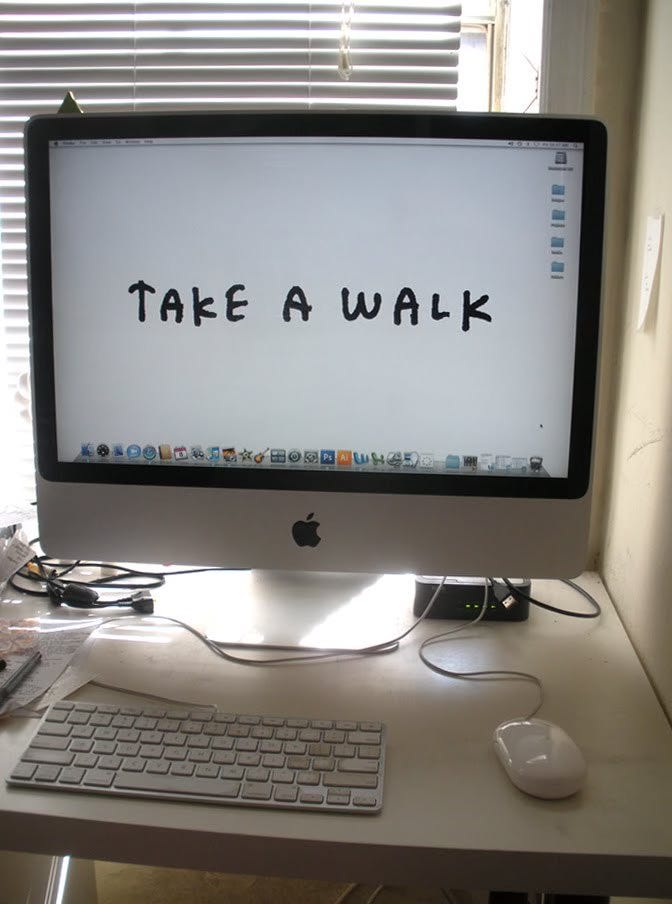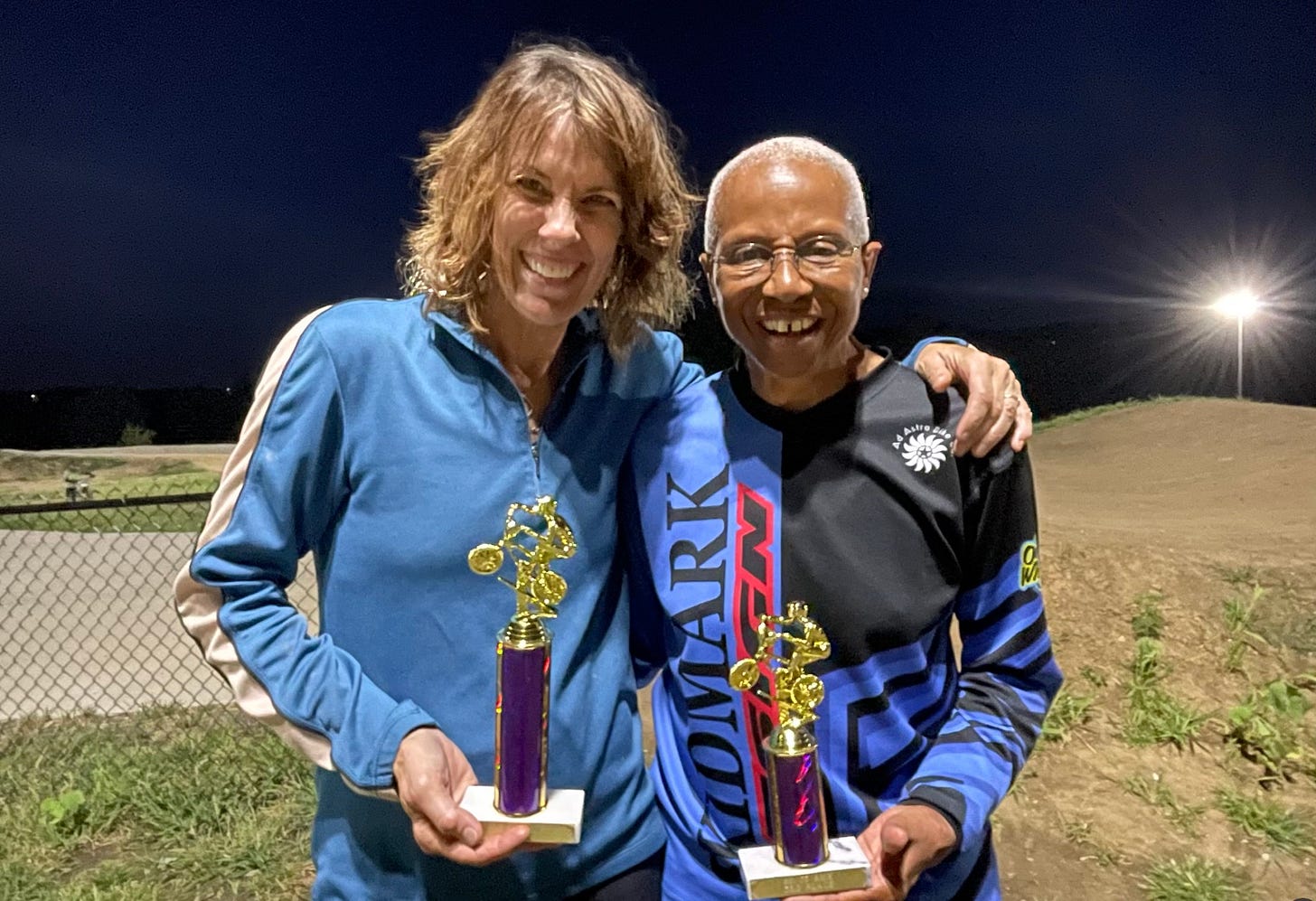Hellooooo, DrawTogether GUT community.
It’s SPRING! Time for a little venue change.
We’ve Been Going Inside
The past couple weeks lessons and assignments have been big on the inside weather, AKA big feelings. Last week we explored “Drawing Suites” via the emotional-psychological drawings of Louise Bourgeois, and the week before that we learned about the work and lives of three Palestinian artists and experienced “drawing in their shoes.” The hundreds of drawings you shared in the GUT Art Share over the past weeks have been moving and deeply inspired and inspiring. I loved reading how connected each of you felt, personally, to the process of drawing, as opposed to the outcome, and the impact that had on your heart and mind. Sometimes it was relaxing and sometimes it stirred up some tough stuff. I hear you, GUT. Same for me. We’re on this journey together. It’s not always easy, but it’s always worthwhile.
Now the sun is coming out. Spring has sprung, so it only makes sense to shift our focus this week from our insides to some blue sky outside.
Now Let’s Go OUTSIDE
The air is crisp. The sky is blue. The flowers are blooming. We can see light at the end of the wintery tunnel and it is bright. It feels right to embrace the season changing this week, and give us a little nudge to stand up from the sofa, stretch, strap on some comfy kicks and GET OUTSIDE.
And we’re going to do it the GUT way! Drawing + Walking Outside = GUT perfection.
There is a long history of artists taking walks as part of their creative practice. AND, bonus, according to the excellent new book “Tough Broad” by author Caroline Paul, getting outside and taking an “ Walk” can help us live longer, be healthier and happier. Soooo. You know what we’re going to do this week, GUT friends? You guessed it…
How to Walk Like an Artist
You’ve probably read a little something about “artist’s routines.” The author Mason Currey who writes the wonderful substack Subtle Maneuvers literally wrote the book(s) on it: Daily Rituals, and Daily Rituals: Women at Work. (Not sure why these are separate books but okay.) Innumerable articles, podcasts, and speakers galore cite successful people’s routines as template for success. Ages ago, I even teamed up with two of the most brilliant people around, Maria Popova and Giorgia Lupi, to illustrate a chart on the sleep habits of writers and artists. I think a lot of us gobble up this kind of information thinking it will teach us tricks to becoming better artists.
Spoiler alert: Just as gulping down the same smoothie as Serena Williams won’t help your backhand, painting at the same time of day Friday Kahlo painted won’t improve your painting skills. Only painting can do that.
What we can learn from these sweeping surveys is thist there is no one way to do anything. And there are also some broad themes that might be helpful to us in a more general sense. For example, artists have routines. Ask anyone who makes things for a living: a routine is necessary to consistently be creative. Also, turns out most artists are not night owls after all. Also, when looking for inspiration, many artists turn to books.
And a LOT of artists take walks.
Artists Who Walk
Georgia O’Keeffe (above) was an early bird. Every morning she rose with the sun, made some tea, watched the sun come up, and went for a half hour walk through the desert. Then she got to work.
Charles Dickens broke up his work day with three hour afternoon walk where he searched for “some pictures I wanted to build upon” and claimed to walk thirty miles a day while writing.
Friedrich Nietzsche said, “All truly great thoughts are conceived while walking.”
Wallace Stevens walked three or four miles between his home and work and added another hours stroll during his lunch, all the while jotting down bits of poems he’d compose while walking.
Julia Cameron, author of The Artist’s Way, amended her whole approach in 2013 to include walking. “I have been teaching now for twenty years since the publication of the book, and I now realize that there are three basic tools, not two, and they are Morning Pages, Artist Dates and Walks.”1
So what is it about walking?
Fact: Walking Makes You More Creative.
While we’ve all heard about the physical and cognitive benefits of walking (helps your heart rate, longevity, decreased chances of Alzheimers), not as many of us have heard about the huge positive impact walking has on creativity.
In 2014, a study from Stanford University found that walking had a tremendous impact on creativity, with the average participant experiencing a 60% increase of creative output. And when you add outdoors to the walk, the creative output is even higher. Wow.
Straight from the study:
“Walking outside produced the most novel and highest quality analogies. The effects of outdoor stimulation and walking were separable. Walking opens up the free flow of ideas, and it is a simple and robust solution to the goals of increasing creativity and increasing physical activity.”2
A 2022 study looked at 25 studies on the impact of physical activity on creativity, and found that yes, indeed, physical activity like walking does increase creativity, especially when it’s consistent over time.
That means if you want to get your creative juices flowing, walking outdoors is scientifically proven to help.

But HOW does walking enhance creativity?
Great question.
Walking and physical activity have been linked to improved mood and stress reduction, and that certainly helps free up our associations and imagination. There’s something to the rhythm of walking that seems to, for me at least, create a beat by which to allow thoughts to move steadily through my mind, and clear up space for new ideas. Also, when we are outside, we simply can’t NOT get fresh input. A glimpse of cloud or sound from someone’s speakers or a hello from a stranger can send our brains down the most unexpected creative paths. And we would never have gotten there inside, sitting at a table, staring at a screen.
Also, the 2014 study mentioned above found a link between walking and associative memory, which means how we remember relationships between two seemingly unrelated items. This, some would say, IS the definition of creativity: bringing together two unlikely ideas to form a new one. Wow.
There we have it. Want to be more creative in your life and art? Get outside and walk.
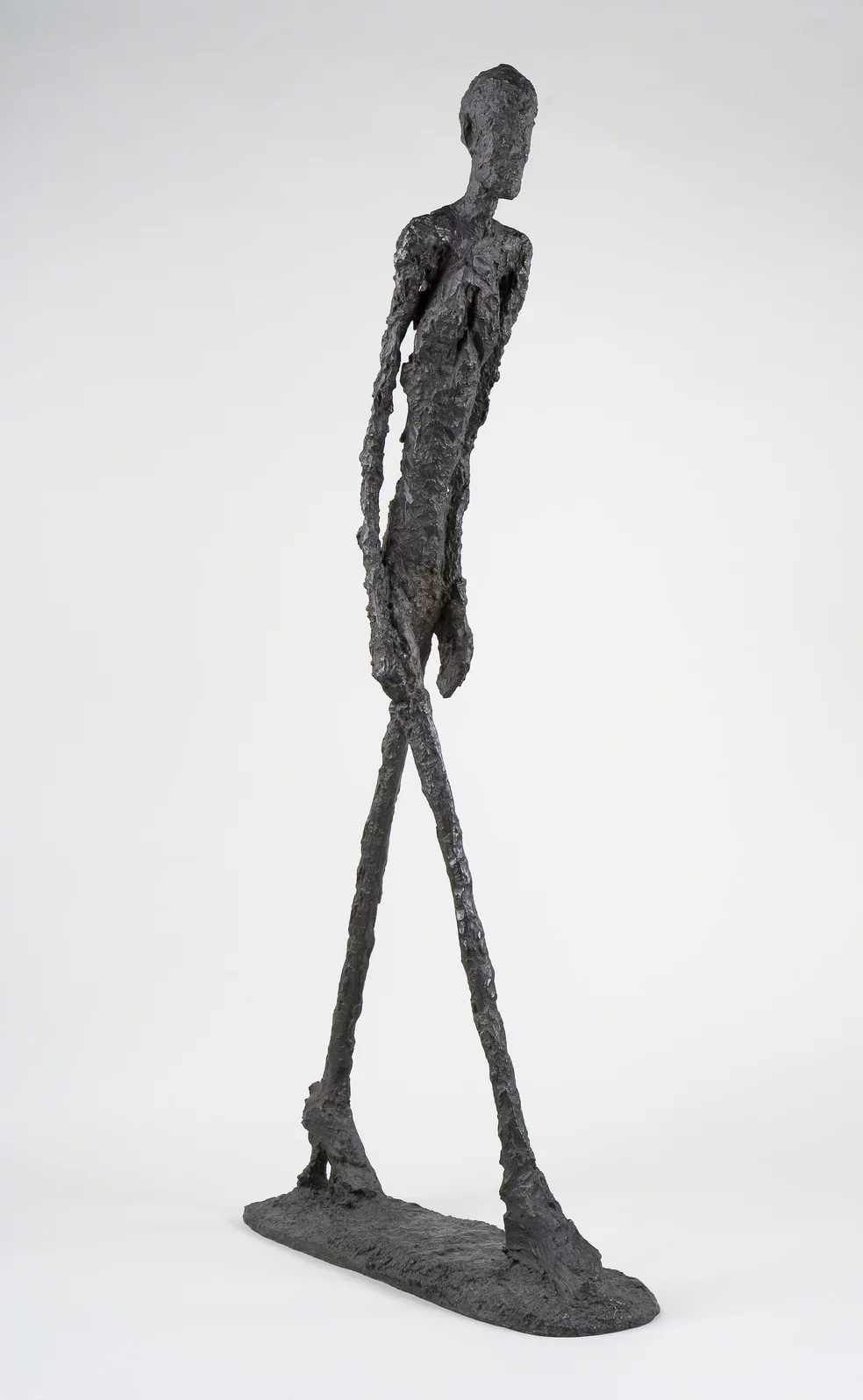
Why Women Over 50 Should Pay Extra Attention (Or, Q&A with “Tough Broad” author, Caroline Paul)
What got me thinking about all this was the new book from the author Caroline Paul, “Tough Broad: From Boogie Boarding to Wing Walking--How Outdoor Adventure Improves Our Lives as We Age.” (Caroline also happens to be my wonderful ex-wife and oft-collaborator! We made the book The Gutsy Girl and Lost Cat together, along with A Little Tea Book with Sebastian Beckwith.)
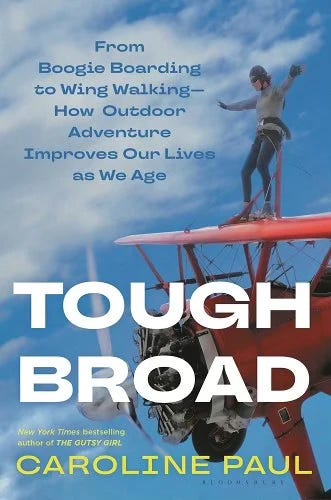
Caroline is a writer and an avid outdoors person. When she is not writing, she is one-wheeling or paddle boarding with her best friend Sophia, or sailing with her other best friend Beth. If she hadn’t sustained an injury from flying her experimental plane (you heard me right) she’d be walking non-stop. All this and she just turned 60.
A few years back Caroline noticed a lot of women dropping out of outdoor physical activity later in life, and she wanted to know why. That question sent her on a journey meeting, speaking, and adventuring with fascinating women 50 and up who engage in outdoor adventure. She accompanied them on everything from birdwatching to base jumping. What did she learn? Read the book to find out (it’s so great) but in short: women who engage in outdoor activity live longer, are healthier in body and mind, and are happier. Period.
I was interested in how that intersects with the research on activity, outdoors and creativity, so I asked Caroline about it. What follows is a little Q&A with Caroline about getting outside, creativity, awe walks, and the power of community as we age and make art. Caroline also gives us our assignment this week, and I think you’re going to love it.

Q&A with Author of Tough Broad, Caroline Paul
NOTE: All the photos in this interview are of people whose stories are featured in the book Tough Broad.
Wendy: Your book Tough Brad is about the benefits of outdoor activity as we age. Could you tell us a little about the benefits of being active in NATURE, specifically. Why won’t the peloton cut it? (Wendy wants to know!)
Caroline Paul: Drag your peloton into the great outdoors, Wendy! The science is unequivocal - Nature is great medicine. The chemicals emitted by trees, called phytoncides, strengthen our immune systems and lower blood pressure. The sounds of rushing wind, whispering leaves, and flowing water measurably relax us by calming brain waves, allowing focus and better memory.. Birdsong elevates both our mood and cognitive ability; the sound of happy, preening birds may signal to our primitive selves that no predators lurk nearby. The research that really struck me, and which might resonate with all GUT artists - was how the rounded and the fractal elements of nature (horizon lines, trees, flowers) match well with the way our retina is built, and this allows for ease in brain processing, translating into less mental busy work and noise, and thus a calmer brain. No wonder after a walk in nature people test better on memory, cognition, and wellbeing. Do your peloton by all means, but for optimal brain waves and cortisol levels - your overall wellbeing - get outside.
Wendy: A lot of artists (visual and otherwise) say walking is part of their creative practice. Maybe they wake before they start working, or they find inspiration on their regular walks.
Caroline: For Tough Broad, I was very interested in how movement triggers creative thoughts. Research (by Frederic and Gaelle Valle-Tourangeau, among others) has shown that “thinking with your brain alone, like a computer, is not equivalent to thinking with your brain, your eyes and your hands.” I write about how adventuring keeps our brains firing more effectively and efficiently as we get older, but the theory applies equally well to artists of any age. No wonder Einstein often went on long walks. As do painters, writers, artists of all stripes.
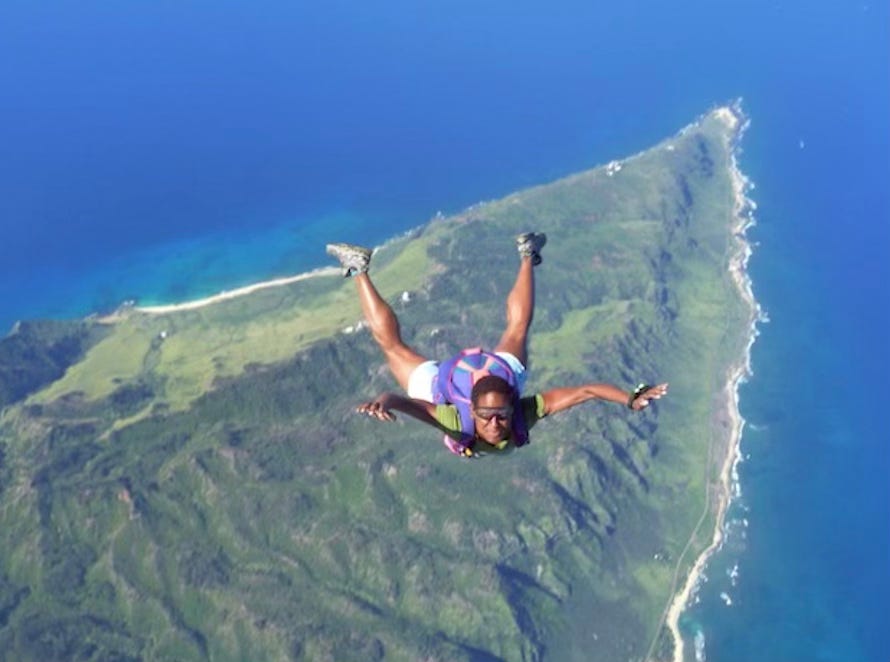
Wendy: In your book Tough Broad, you talk about the helpfulness of “awe walks. Can you tell us what an “awe walk” is and how it’s different from a regular walk? And why is it so useful?
Caroline: Awe is defined as the emotion we feel in the presence of something mysterious, something bigger than ourselves, a sort of fear, confusion, and wonder all mixed up. Awe is often associated with a religious experience, but is also easily triggered by Nature, say, looking up at the stars, or down into the Grand canyon. The novelty, the shock, the wonder, the disorientation - this is where creativity is born.
In The Extended Mind, author Anne Murphy Paul (no relation) describes awe as “a reset button,” because when we are awestruck we “become more curious and open minded and more willing to update … the templates we use to understand ourselves and the world.” All artists, then, should find awe. But how? It’s worth noting that we live in a world of anti-awe devices, like our phone and our computer screen, because they narrow our focus and thus we think smaller.

As I relate in the book, I found awe when I crawled along the wing of a flying plane, strapped myself to the center post and then hung on as the pilot executed a series of loops, hammerheads, and barrel rolls. But you don't have to do that! Turns out you can access awe by just walking in the outdoors. Scientists from the UCSF Memory Care and Aging Institute sent volunteers on fifteen minute daily ambles over an eight week period, with instruction to look at everything with “fresh, childlike eyes.” Almost as an afterthought, researchers also asked each participant to take a selfie during each excursion. These “awe walkers” soon noticed an uptick in well being, a decrease in anxiety, and more gratitude and compassion. Scientists also found significantly lower inflammation, which is key for health. Most notably, the selfies, which initially featured themselves, began to change, their faces receding and their surroundings taking up most of the photo. This “small self” perspective suggested that the participants had become more curious, with a healthier sense of their place in the wider world. The upshot: by slowing down and allowing yourself to marvel at leaves, tree bark, insects, birds you too will uncenter yourself, reset some old neural pathways, and make way for novel thoughts and deep emotion.
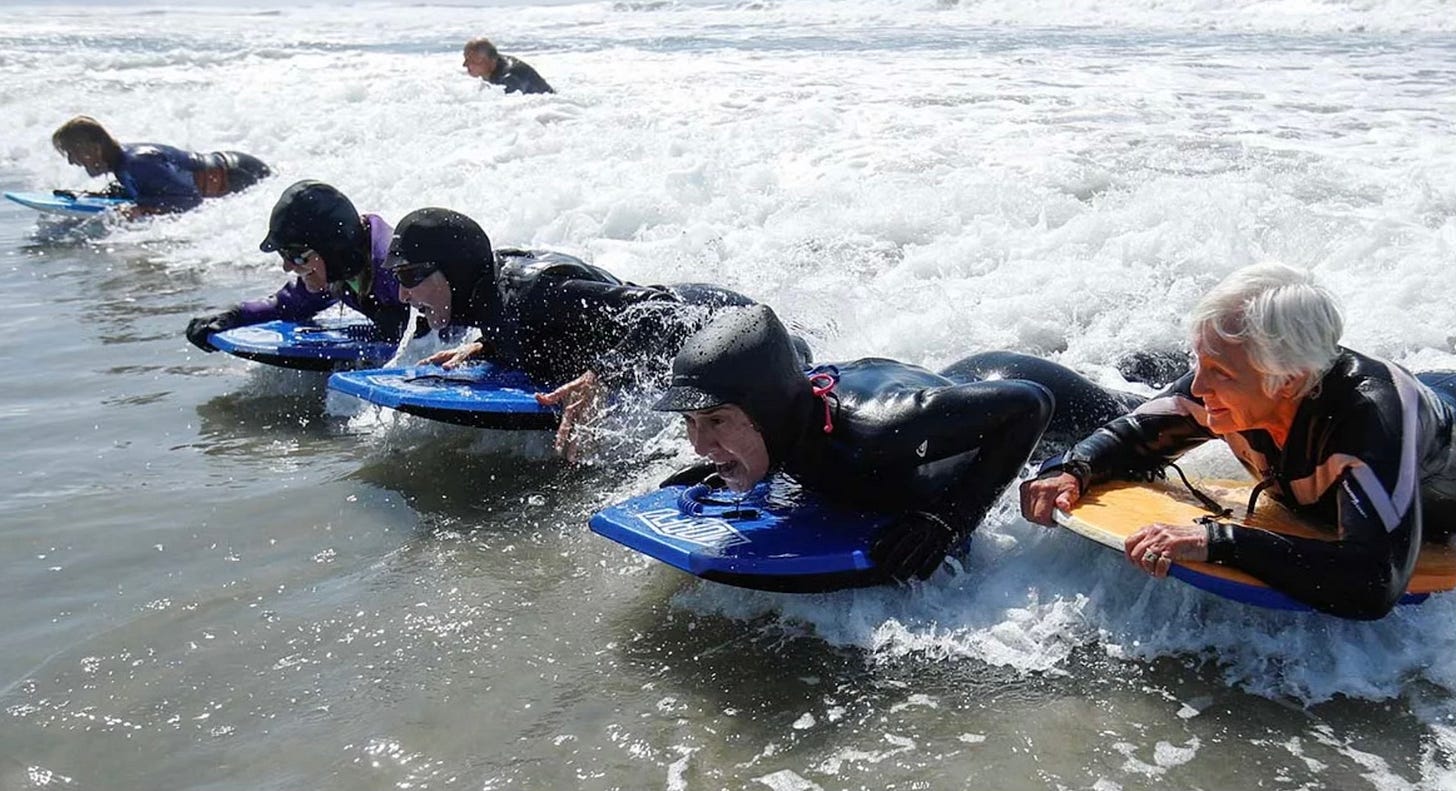
Wendy: One big thing you talk about is community- that’s something we build here in the DrawTogether GUT. Could you talk about the role of doing things TOGETHER, and how impacts outcomes?
Caroline: I was interested in the bonds we form when we get outside because community is so important to us as humans, and it tends to fall away as we age. We need human connection, yes, but more than that, our happiness is tied to a deep sense of belonging, of being an integral part of a bigger endeavor. For the book I looked into the work of “the happiness professor” Laurie Santos who said that a group undertaking - in my case, BMX bike racing with a 74-year-old Kittie ‘Miss Kittie” Weston-Knauer, but in your case the GUT - offers a “cultural apparatus” to get outside ourselves and our own problems. Professor Santos says that much of modern self care, with its inward focus and its advice to concentrate on massage routines and personal downtime, may actually be self defeating; a more fulfilling endeavor would be to, say, line up on a starting line with a group of like-minded speed enthusiasts, or share heart spiral drawings with thousands of other GUT participants around the world.
Wendy: A lot of our members are interested in drawing outdoors, and in nature. Did you find anything in your experiences with the people you interviewed or the activities you all did together that intersects with creativity, and the kind of things we do in the GUT? What advice would you give nature drawers so we can benefit from your learning?
Caroline: My advice to GUT artists is less about going outside per se (though do that, please), and more about pushing general comfort zones, because that is where growth lies, in both creativity and in personal happiness. One person I interviewed for Tough Broad was my own mom. She had always considered herself to be a fearful person, not that interesting, certainly not an adventurer. But then one day at 52-years-old she decided to skydive, and that simple act of jumping out of a plane radically upended her understanding of herself. I saw this over and over again - a woman took up an outdoor activity and in one fell swoop subverted what she - and the culture - thought she could do, and this itself led to more change. At one point I went to San Diego to interview a group of boogie boarders in their 60s, 70s, and 80’s who called themselves the Wave Chasers. I spoke to Loraine Vaught, 62, who had joined the group during the pandemic after a lifetime with no outdoor hobbies and zero interest in adventure. “Boogie boarding changed my life,” she told me. What!!!?? I was stunned. How could the simple action of lying on a small floatable square and coasting to shore on an ocean wave be so transformative? Turns out, wading into the cold Pacific water, being tumbled by waves, and laughing hysterically with her fellow Wave Chasers was a direct rebuke to all the social messaging Loraine had internalized about aging and her future, that said she could expect little of later life except frail bones, cognitive decline and boredom.
What I’ve learned through writing Tough Broad is that your most creative act may be upending your own hardened definition of yourself, because that leads to even more creative acts. Perhaps another way to say this is to quote Virginia Rose, with whom I went birdwatching. “Unearth your inner explorer,” she told me. “She is probably your best self.” You do this by embracing the unexpected and pushing on your perceived limitations, whether it be hiking that steep mountain trail, learning to swim at 68 years old, or hesitantly setting your paint brush to paper for a GUT assignment.
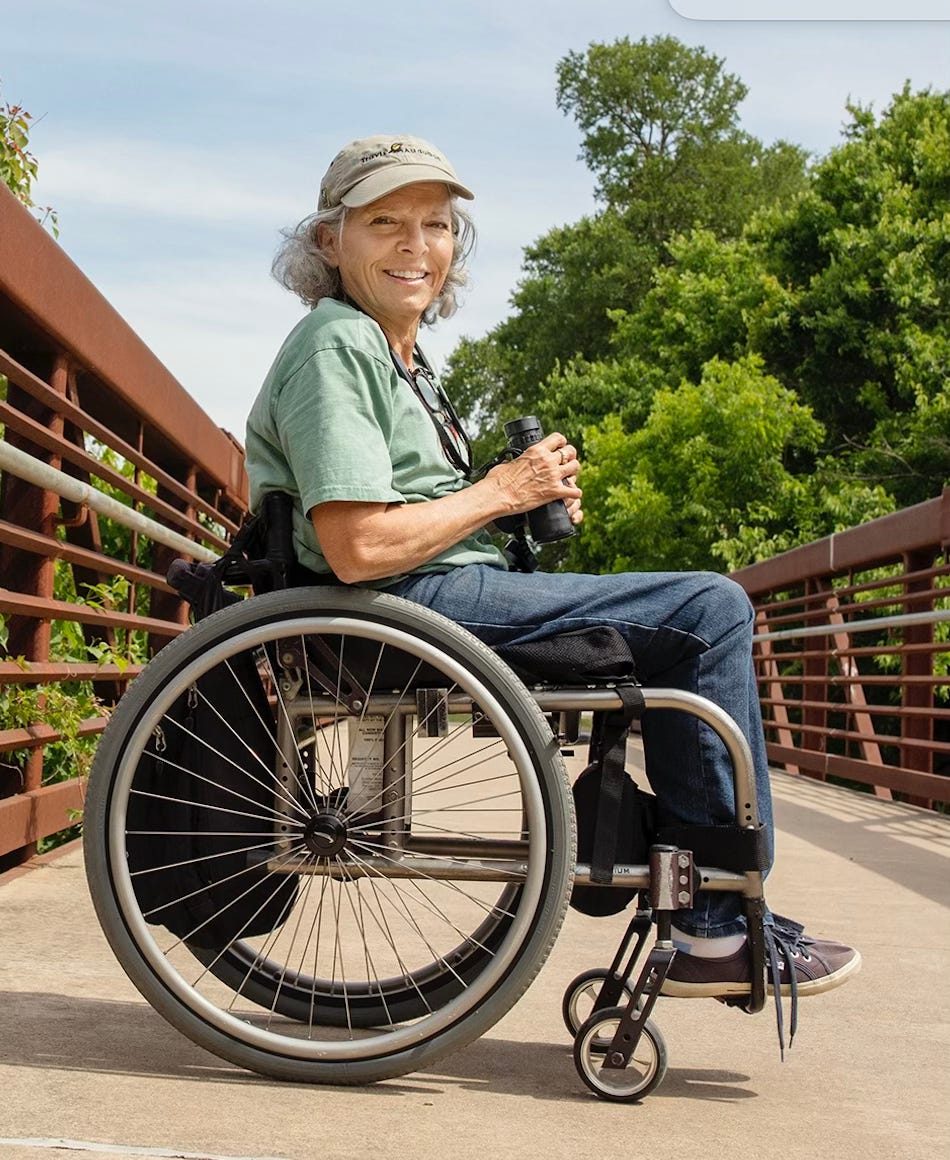
To that end, it would be cool to hear from your community at some point about how the bravery needed to join the GUT and draw on a weekly basis has affected other parts of their lives. I bet there are as many empowering stories here as I found on sea kayaks, on bicycles, and in swimming pools.
Thanks, Caroline. That’s a great question for GUT Members: how has joining the GUT and taking the leap to draw affected other parts of your life?
And with that, we say “Thank you, Caroline!!” We have a giveaway of your book for GUT members in the assignment below, which Caroline is giving usthis week! All you will need a sketchbook, pen, some color and your sneakers. :)
Let’s do this.
Assignment
Our drawing assignment this week (and a recipe for all art making, i think) can be summed up in 7 words.
Here’s how we are going to turn that into a drawing in three steps, so to speak:



